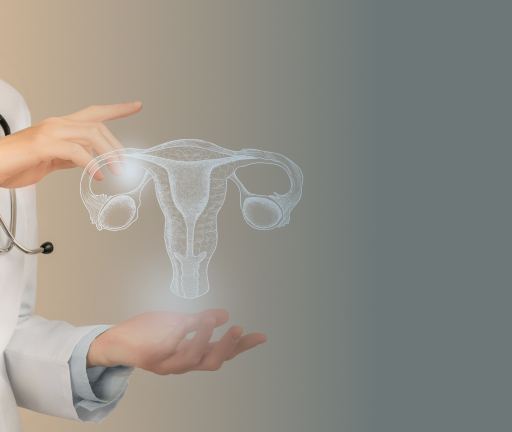Myomectomy is a surgical procedure to eliminate uterine fibroids also known as leiomyomas in medical terms. Most often these uterine fibroids develop during the child-bearing years but can occur at any age. These are non-cancerous growths in the uterus. The surgeon removes the fibroids during the procedure in such a way that the uterus remains unharmed. In addition to improving uterine health, heavy menstrual flow and pelvic pressure are reduced. Also, the woman can still have children after surgery if she desires.
Myomectomy is suggested by a doctor in any of the following cases:
- When a woman is planning to bear children and is unable to conceive
- In cases where a physician suspects that fibroids may affect fertility.
- In the case of women who wish to avoid a hysterectomy,
- Severe pain or heavy bleeding during periods not controlled
During a myomectomy, the surgeon makes an incision in the lower abdomen. Then, the fibroids are removed from the walls of the uterus. The uterine muscle is then sewn back. A doctor might also use minimally invasive techniques such as laparoscopy or hysteroscopy to remove the fibroids. The size and location of the fibroids determine the type of procedure that is most appropriate for each patient.
Myomectomy is a safe and effective treatment option for women with fibroids who want to preserve their fertility or avoid a hysterectomy. For many women, this is an attractive option since it allows them to maintain their fertility and keep their uterus intact. However, it is critical to discuss the risks and benefits of the procedure with a healthcare provider to determine the most suitable treatment plan for each individual.
FAQs
At Aster Hospitals we provide the highest quality of care and a transformative experience for all your healthcare needs. With our network of multi-speciality hospitals, specialised doctors, and world-class technology, we bring global standards of medical care to our patients.
What is the difference between myomectomy and hysterectomy?
During Myomectomy the fibroid tissues in the uterus are excavated, while in Hysterectomy complete uterus is removed.
How long does a myomectomy surgery last?
The procedure takes approximately two to three hours. This time frame varies depending on the size of the fibroids, the number of fibroids, and the size of the uterus. The surgery is typically carried out laparoscopically, which is a minimally invasive procedure that requires only a few small incisions.
What should be my sleeping position after the myomectomy?
Ideally, any position is ok after Laparoscopic and Hysteroscopic Myomectomy
- Lie straight on your back.
- Use a pillow underneath for comfort.
- Add a cushion for more support if needed.
Are there any chances that my fibroids will reoccur after a myomectomy?
If a woman tends to grow fibroids, new fibroids may grow. It is possible that the underlying causes of fibroids, such as hormonal imbalances and genetic predisposition, could still exist. It is necessary to repeat surgery after a few years in this case.
After the myomectomy, how will my first period be?
It will depend on the extent of the surgery and how much tissue was removed. There might be brown or reddish-brown vaginal discharge or spotting for a few weeks after surgery. This is normal. Your first two periods are expected to start early or late. Some women may have a longer or heavier period than others. It is imperative to speak with your doctor about what to expect.
What are the possible changes in the body after a myomectomy? A woman may probably experience changes in her menstrual cycle after undergoing a myomectomy. This may include heavier or lighter periods, longer or shorter periods, and more or less frequent periods. Hormonal imbalances, abdominal discomfort, and fatigue are also possible changes.
Is a myomectomy considered major surgery?
Myomectomy is indeed major surgery. Fibroids are removed from the uterus using open surgery or laparoscopy. An abdominal incision may be required depending on the size and location of the fibroids, making the surgery a major one.
What should I avoid after a myomectomy?
Patients are suggested to avoid the following for four to six weeks after myomectomy;
- Avoid taking a bath first week.
- Avoid making incisions wet during bath.
- Avoid strenuous exercises such as biking, jogging, and aerobics.
What preparation should I do before my myomectomy surgery?
- Take the medicine, if told by the doctor to do so on the day of surgery
- Take a bath before leaving home for surgery.
- Do not apply any lotion, cream, perfume, or deodorant with a strong odor.
- Do not attempt to shave the surgical site by yourself.
How many days of rest are recommended after a myomectomy?
Generally, women are advised to rest for at least two to three days after the procedure. In addition, they are advised to avoid strenuous activities for four to six weeks. After that, it is wise to gradually increase activity levels, while still avoiding activities that may be too strenuous. However, it takes a woman about six weeks to recover fully after surgery.
Is a myomectomy considered major surgery?
Myomectomy is indeed major surgery. Fibroids are removed from the uterus using open surgery or laparoscopy. An abdominal incision may be required depending on the size and location of the fibroids, making the surgery a major one.
What is the difference between myomectomy and hysterectomy?
During Myomectomy the fibroid tissues in the uterus are excavated, while in Hysterectomy complete uterus is removed.



